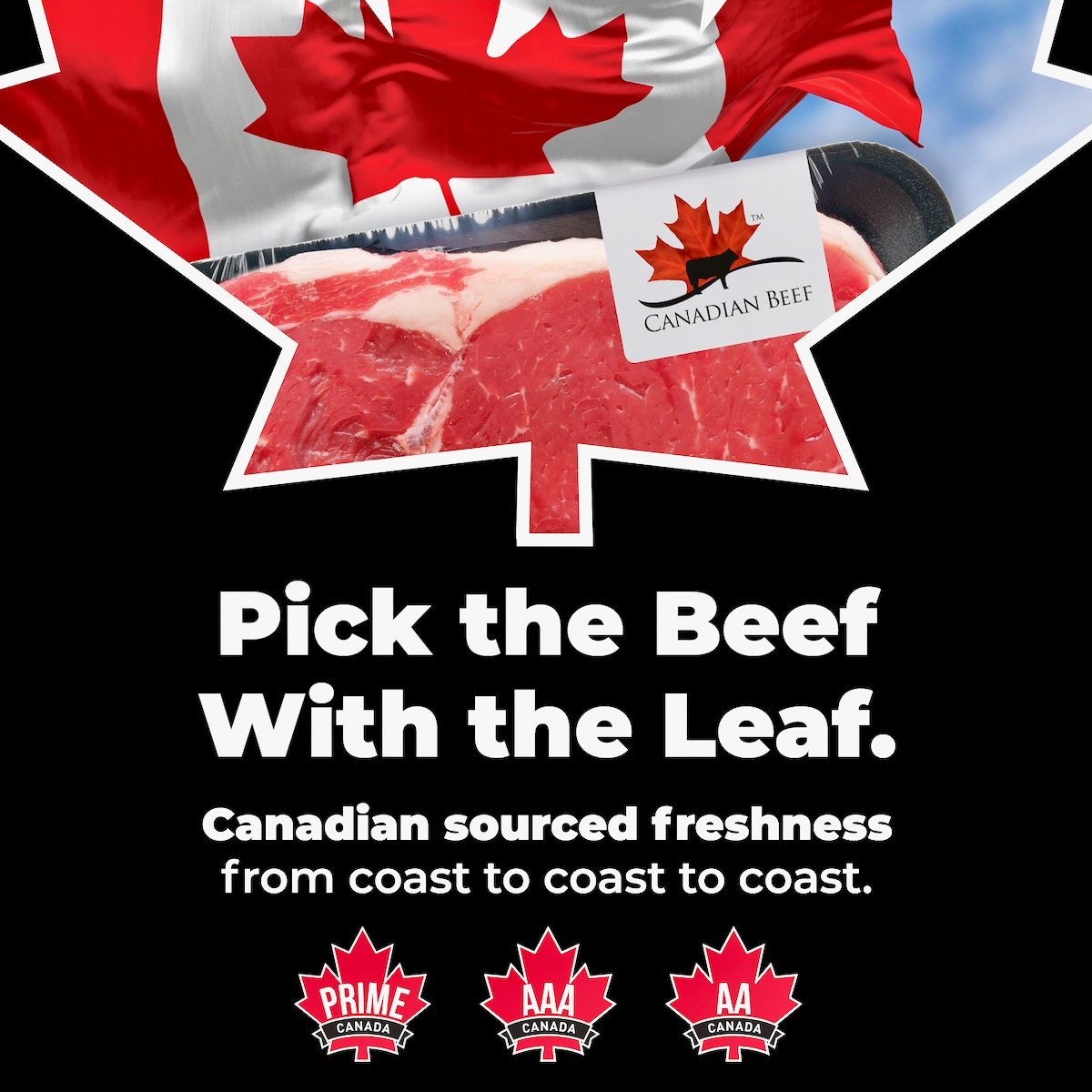Canada Beef recently provided readers with a high-level overview of its proposed $3.5 million Trade Disruption Response Plan, developed with industry to address the widespread implications to the Canadian beef industry should the U.S. impose tariffs on Canadian beef and cattle. This month, we share some of the actions already underway in domestic and international markets under Canada Beef’s additional plan — the Adjusted Adaptive Plan.
The Adjusted Adaptive Plan (reallocation of our current budget) was activated in February to address the potential of U.S. tariffs of 25 per cent on beef originally slated for March 4 implementation. Canada Beef developed both plans — the Adjusted Adaptive Plan and the proposed Trade Disruption Response Plan — when the U.S. administration first announced the tariffs. The latter proposed plan was presented to Canada’s Minister of Agriculture and Agri-food for consideration for additional federal government industry development funds via the Canadian Cattle Association (CCA) in late February.
The U.S. administration moved to delay the implementation of tariffs on beef to April 2 after Canada imposed retaliatory tariffs on $155 billion worth of imported goods from the U.S. on March 4, beginning with a list of goods worth $30 billion. The situation between governments was fluid when this column was filed.
Read Also

How to work with several generations on the ranch
With up to five generations working together on the ranch, it’s important to foster understanding and communication
What we know with certainty is that U.S. tariffs present multiple challenges for Canada’s beef industry.
Canada’s top beef exports to the U.S. by volume are fresh boneless (48 per cent), fresh trim (29 per cent) and fresh bone-in cuts (nine per cent). U.S. top beef exports to Canada by volume include fresh trim (31 per cent), fresh boneless cuts (29 per cent), and processed products (24 per cent).
Anticipated effects on ground beef, middle meats and other Canadian beef cuts once subjected to U.S. tariffs are as follows:
- Displaced exports of fresh trim to the U.S. may increase the volume of ground beef in the domestic market.
- Higher-value cuts traditionally sold in the U.S., such as the top tier of Canada AAA and Canada Prime middle meats, may also be in greater supply in the domestic market.
- It is not anticipated that all displaced U.S. exports can be sold in other export markets, so greater consumption in Canada will be required to use current production if it is maintained.
Canada Beef activated its adaptive plan and intensified current in-market efforts to increase the visibility of our products and encourage loyalty.
This included popular consumer education campaigns such as “Pick the Beef with the Leaf,” to show shoppers how to identify Canadian beef on packages of beef at the retail meat counter, advice on how to read beef labels and offer cooking tips and tricks to create budget-friendly meals.
A co-ordinated social media campaign was created to help boost awareness about Canada’s beef grades, communicate the benefits of Canadian beef and stir patriotism by putting a face to Canada’s hard-working farm families. A television component of the “Pick the Beef with the Leaf” campaign strategic messaging is underway, targeting high-profile news programming with regional and national news carriers.

Consumer-facing social media campaigns that support Canadian beef awareness are being deployed. These campaigns use videos, reels and infographics to showcase key aspects of Canadian beef production, such as sustainability, and point to resources for shoppers. A good example is the Retail Showcase powered by the Canadian Beef Information Gateway, which helps shoppers locate retail chains that carry Canadian beef and encourages them to shop local and support Canada’s beef producers.
The Restaurant Gateway provides decals for restaurants promoting Canadian beef. Currently, there are window decals for restaurants in eight provinces across Canada. Canada Beef wants to help participating restaurants become a Canadian beef destination, with engagement through contests and promotions. Canadian beef steak guide videos for food-service diners will communicate steak attributes for the most popular menu options.
For the retail side, Canada Beef can provide promotional Canadian beef labels for Canadian ground beef targeted at large format packaging as well as frozen patties. Grade labels for Canadian AAA+ middle meats in vacuum packaging are also in the works, along with grade labels with QR codes to communicate more information and visually identify Canadian beef.
On the global marketing side, efforts to expand the presence of Canadian beef in key export and high-opportunity markets continue. Tactics include targeted advertising and information campaigns to enhance Canadian beef’s marketing, branding and presence in Asia.
Canada Beef will participate in more major food industry trade shows, with 16 events scheduled in multiple markets between February and October. This included Gulfood 2025 in Dubai, United Arab Emirates, and the SuperMarket Trade show in Japan in February. Scheduled events in March included ExpoCarnes and Antad in Mexico, Foodex and Kuze Trade Show in Japan, Food and Hotel Hanoi Show in Vietnam, and the Mayfull Food Company Spring Banquet in Taiwan.
Eric Bienvenue, Canada Beef president, and Albert Eringfeld, vice-president of export market development, participated in trade missions to meet with trade commissioners, importers, retailers and wholesalers. New export sell sheets are being created and include information to help promote cuts previously exported to the U.S. in other export markets.
The aforementioned tactics provide a sample of the efforts currently underway to enhance the visibility of Canadian beef and grow mindshare with consumers.
The proposed Trade Disruption Response Plan includes aggressive marketing, branding and promotional initiatives to amplify the visibility of Canadian beef and reinforce Canadian beef as the protein of choice at home and abroad.
Canada Beef continues to assess strategies to position Canadian beef and maintain market share as we navigate the various potential scenarios.
– Eric Bienvenue is a strategic leader with more than 25 years of senior leadership experience in Canada’s animal protein sectors. A native of Saint-Valérien, Que., Bienvenue is based out of Canada Beef’s Calgary headquarters and resides in Airdrie, Alta. Gina Teel is the director of stakeholder communications for Canada Beef, where she provides timely and effective communication of all Canada Beef initiatives and outcomes to funding partners and industry stakeholders, media, consumers, and other external audiences.
















